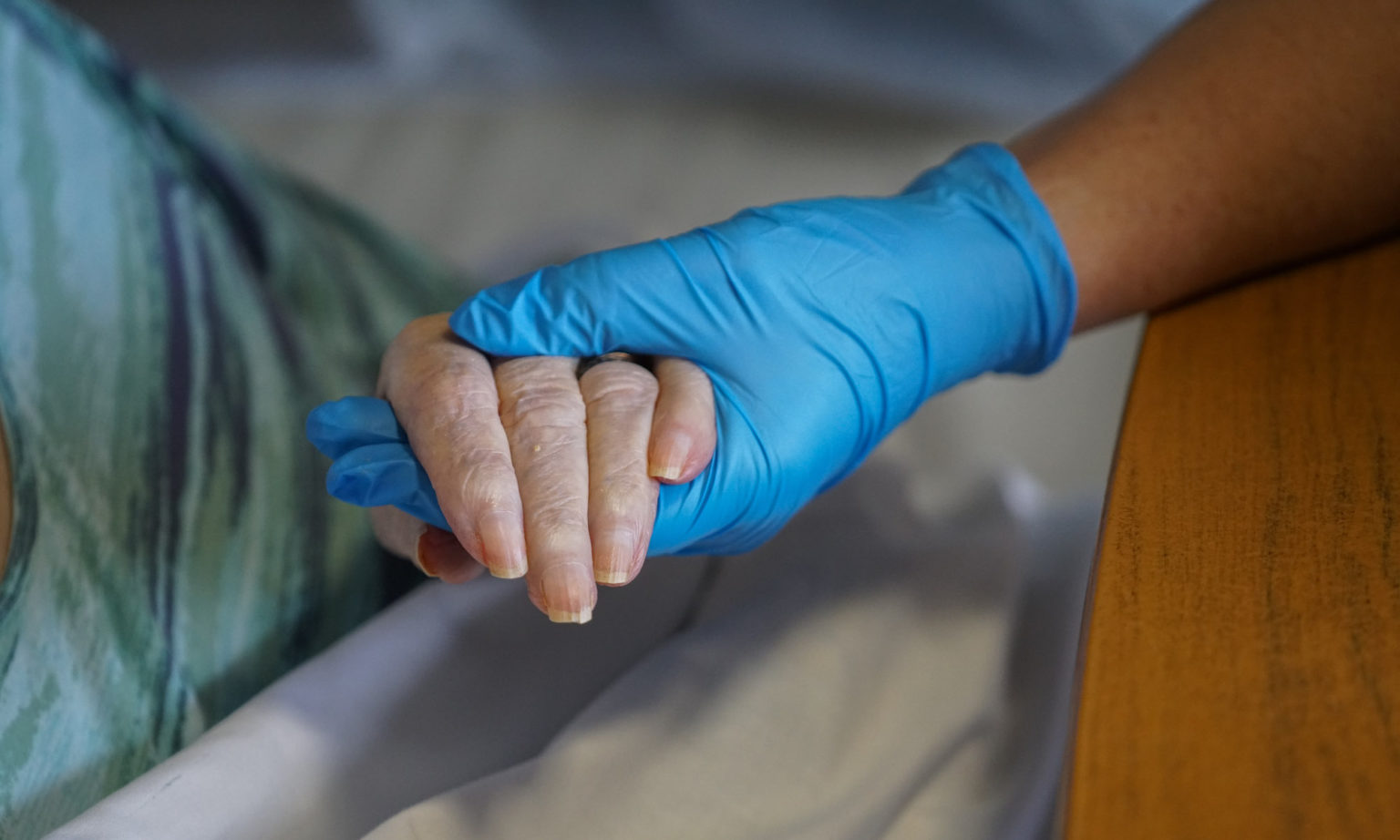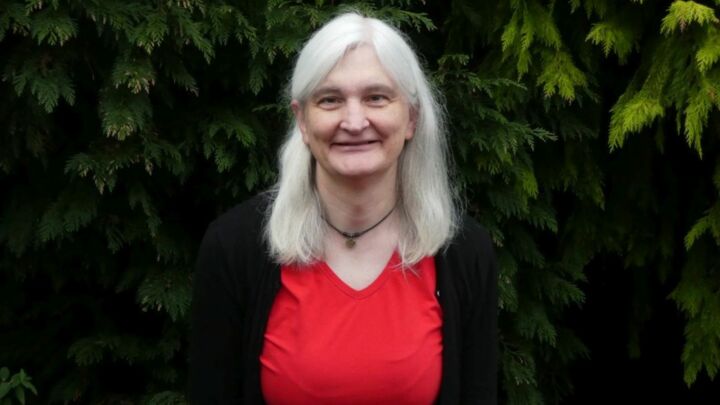
Long-read
The liberal, humanist case against assisted dying
The assisted-dying campaign is not as reasonable or humane as it appears.
The campaign to legalise assisted dying appears reasonable and compassionate. Its advocates claim it would allow us to legally put an end to the unnecessary suffering of those who want to die. As Baroness Meacher – the sponsor of the Assisted Dying Bill currently making its way through the House of Lords – said of helping a friend arrange an assisted death in Switzerland: ‘I was motivated purely by compassion. But in the eyes of the law, my acts made me a criminal.’
Although it looks reasonable and humane, this campaign to legalise assisted dying is anything but. As I will set out below, it is primarily based on fear-mongering; it would undermine the idea of moral equality that regards the killing of an 86-year-old as just as wicked as the killing of a 24-year-old; and rather than liberate the individual, it would destroy his freedom.
Moreover, as the history of the euthanasia movement shows, the undoubtedly genuine compassion of today’s assisted-dying campaigners conceals the disturbing utilitarian and technical view of humanity on which their campaign is ultimately based.
The language of assisted dying
If we are to understand assisted dying beyond the emotive case now made for it, we must pin down the modern terms. Euthanasia – literally ‘good death’ – is where the doctor acts to end life. It can be voluntary or involuntary. Passive euthanasia is death by omission – when doctors, either of their own volition or at the request of the patient, purposefully end treatment, knowing it will lead to death. Passive euthanasia might also include a patient refusing food and drink but still being kept comfortable by medical attendants. Such acts are legal almost everywhere. Assisted suicide is when the doctor provides the means but the patient takes the final action. ‘Assisted dying’, or ‘Medical assistance in death’ (MAiD), appears to be a compendium term that might or might not include some of the above.
Indeed, the terminology shifts according to timespan and geography. Little wonder, the terms
Does the term ‘assisted dying’ help public understanding? No, it doesn’t. In a UK poll conducted in 2021, when asked ‘What do you understand by the term “assisted dying”?’, 42 per cent of Brits polled thought it meant ‘Giving people who are dying the right to stop life-prolonging treatment’ – a right that they already have. When considering that the majority of Brits support the legalisation of ‘assisted dying’, it is useful to remember that much of what they support is already legal.
A fear-mongering campaign
The campaign to legalise assisted dying often plays on people’s fears of how they and their relatives might die. Hence a typical campaigning video by Dignity in Dying, a leading UK-based assisted-dying campaign group, will feature a person dying painfully in hospital, begging the doctor to make it stop. He or she will be surrounded by relatives, who tearfully plead with hospital staff to end it. Many watching such short films will recall the death of a loved one and are genuinely horrified at the prospect that anyone else should have to suffer like that.

But how true is this scenario? Not very. In 2019, the CEO of Hospice UK, a charity that works with those experiencing death, dying and bereavement, publicly chastised Dignity in Dying for the ‘sensationalist and inaccurate’ portrayal of death in a video to accompany its ‘The Inescapable Truth’ campaign.
Dignity in Dying eventually removed that particular video but it is persisting with its scare tactics. It continues to claim that 17 people will suffer as they die every day. What it does not say is that an estimated 1,700 people die every day in the UK. That means, according to Dignity in Dying’s own statistics, that less than one per cent of the population will suffer as they die.
Besides, the focus on averting pain is misleading. In fact, pain does not feature in the top five reasons why people opt for death in nations and states where assisted suicide is legal.
The freedom to die?
Is there not a case for justifying assisted dying on grounds of individual freedom and the right to choose? Surely assisted dying is a case of volenti non fit injuria (to one who volunteers, no harm is done)? As Article 4 of the French Declaration of the Rights of Man and the Citizen (1789) had it: ‘Liberty consists in the freedom to do everything which injures no one else.’
John Stuart Mill addressed a similar argument, in relation to the freedom to sell oneself into slavery, in On Liberty. The reasons for doing so, as with asking to be killed, might be entirely virtuous, he argued. For example, someone might wish to sacrifice his freedom for that of his children and be promised remuneration for selling himself into slavery. But, as Mill explains: ‘The reason for not interfering, unless for the sake of others, with a person’s voluntary acts, is consideration for his liberty… But by selling himself for a slave, he abdicates his liberty… The principle of freedom cannot require that he should be free not to be free. It is not freedom, to be allowed to alienate his freedom.’ (1)
Suicide, assisted or otherwise, can be seen in the same light, as an alienation of an individual’s freedom. Indeed, death is absolutely destructive of freedom. As Mill would have it, it is not freedom to be allowed to destroy one’s freedom. If we are to regard each individual human life as a good, as something to be valued in and of itself, then we must oppose the destruction of an individual life. To be free to die is no freedom at all.
Lives worth living
Assisted-dying campaigners often try to separate those who should have the right to die from those who should not. Dignity in Dying, for instance, draws an imaginary line between the ‘dying’ and those who are not dying imminently. According to Dignity in Dying, the ‘dying’ are those who are about to die soon and therefore should be allowed to kill themselves, whereas those with more than six months to live should have no right to kill themselves and strenuous efforts must be made to prevent them from doing so.
The charity, Humanists UK, however, argues that ‘we do not think that there is a strong moral case to limit assistance to terminally ill people alone…’. And campaign group My Death, My Decision also rejects restricting assisted suicide to the terminally ill. Yet even these organisations refrain from campaigning for the right of all competent adults who want to die to be assisted in their suicides. They just draw different lines between those whose lives are worth living and those whose are not.
Moreover, virtually all assisted-dying advocates argue that doctors should ultimately be in charge of the process of deciding who is entitled to an assisted death. Even in Switzerland, where assisting a suicide is legal so long as there is no monetary interest involved, doctors are expected to facilitate suicides.
This is a serious problem. The decision as to whose life is no longer deemed worth living effectively rests with medical authorities or other representatives of the state. It is up to them to decide who should live and who should die.
That is what legalising assisted death means in practice – a declaration that some people, placed in certain categories, lead lives that are less worth living than others. The implications are not only frightening, they also point to the grim past of the euthanasia movement.
A dark history
‘Euthanasia’ is a very modern concept. The word, literally meaning ‘good death’, existed in Ancient Greece, but it referred principally to the idea of living well before death.
Circulating in English from the 17th century onwards, euthanasia acquired its contemporary ‘mercy killing’ sense in the late 19th century. In a paper given to the Birmingham Speculative Club in 1869, someone called Samuel D Williams was one of the first to give it its modern meaning. ‘Why, it must be asked again’, he said, ‘should all this unnecessary suffering be endured? The patient desires to die; his life can no longer be of use to others…’ (2)
Some freethinkers did indeed think there was a right to die. The famous secularist Robert Ingersoll, who published a pamphlet in 1894 entitled Is Suicide a Sin?, answered with his own question with a resounding ‘no’: ‘So I insist that the man being eaten by… cancer – a burden to himself and others, useless in every way – has the right to end his pain and pass through happy sleep to dreamless rest.’ (3)
Yet Williams, Ingersoll or anyone else at the time never imagined that suicide – a solitary act – should be assisted.

Only in the early part of the 20th century did euthanasia proper come to the fore. In the United States, France, Great Britain and Germany, there were several unsuccessful attempts to legalise euthanasia. This pro-euthanasia campaign emerged against a political background increasingly dominated by eugenics. While ‘Social Darwinism’ implied that the fittest would survive if nature weeded out society’s losers, eugenics favoured active intervention to assist natural selection. As the German zoologist Robby Kossmann put it at the end of the 19th century, the state ‘must reach an even higher state of perfection, if the possibility exists in it, through the destruction of the less well-endowed individual… The state only has an interest in preserving the more excellent life at the expense of the less excellent.’ (4)
In 1913 Roland Gerkan, who was dying from tuberculosis at the time, petitioned the German parliament, asking for those in his situation to be allowed to be dispatched by a physician. He insisted that it be voluntary but insisted ‘examining doctors’ should determine whether or not ‘the patient would recover permanent ability to work’. He further noted that euthanasia should be ‘equally applicable to the elderly and crippled’ (5).
In 1920 Karl Binding and Alfred Hoche published the pamphlet, Permitting the Destruction of Life Unworthy of Living. They argued that ‘there are indeed human lives in whose continued preservation all rational interest has permanently vanished’ (6). Psychiatrist and neurologist Robert Gaupp – remembered for his principled defence of a man with Jewish associations in opposition to the Nuremberg Laws in 1935 – was referring to mentally disabled people when he said that it was time to remove ‘the burden of the parasites’ (7).
Such views reached their grim culmination in the Nazis’ infamous T4 Aktion programme – an involuntary euthasia project responsible for an estimated 300,000 deaths of mentally and physically disabled patients between 1939 and 1945. Of course, no one should infer that these brutal killers bear any relation to today’s assisted-dying campaigners – who are, in general, sincerely compassionate in their motivations. But nor should we view the T4 Aktion programme as entirely distinct from the wider euthanasia movement.
These sentiments were not restricted to Germany. In the US, supporters of euthanasia were equally vocal. ‘Our puny sentimentalism has caused us to forget that a human life is sacred only when it may be of some use to itself and to the world’, said the famous deaf, dumb and blind woman, Helen Keller. In the early years of the 20th century, Dr Ella K Dearborn cheerfully called for ‘euthanasia for the incurably ill, insane, criminals and degenerates’ (8). And in the UK in 1931, Sir James Purves-Stewart, a physician at Westminster Hospital and future member of the Voluntary Euthanasia Legislation Society – the forerunner of Dignity in Dying – called on his countrymen to give euthanasia ‘most serious consideration’ because of ‘a grave menace to the future of the state’ and ‘race’. Another prominent ELS member, the psychiatrist and eugenicist, AF Tredgold, told the British Medical Journal that euthanasia should ‘also be extended to include incurable low-grade defectives. It is true that these would be incapable of consent, but their inclusion would appear to be a logical sequence of the proposal.’ (9)
Against assisted dying
After the Second World War, and the horrors of the Nazism, the word if not the meaning of euthanasia fell into a certain disrepute. In 1950 a euthanasia proponent writing in the New Republic called for a new terminology: ‘If we call these situations “assisted suicide” rather than “mercy killing”, the moral content would be considerably changed.’ (10) Assisted suicide, though, had to wait until the 1980s to enter common parlance.
Today, of course, the campaign for assisted dying is very different to that for euthanasia before the Second World War. But some of the same utilitarian concerns about certain people being a burden and a drain on resources persist just below the surface of today’s assisted-dying discourse. For example, in the Netherlands, where euthanasia and assisted suicide have been legal since 2001, mainstream political parties have expressed support for the Completed Life Initiative. Based on a 2010 campaign that boasted 117,000 supporters, the CLI promises euthanasia for those over the age of 74 who are ‘tired of life’. That this age group is also deemed the least productive in society should worry us all.
Then there is the widespread use of quality-adjusted life years (QALYs), a measure of a person’s ability to carry out daily activities, free from pain and mental disturbance. This measure allows states to rationalise resources, especially medical resources, according to the ‘quality’ of the years a person might have left. Proponents of assisted suicide often employ QALY measurements to assert that the lives of people with certain conditions are not worth living. As two researchers argue, ‘denying access to assisted dying means that patients remain alive (against their wishes), and this can often necessitate considerable consumption of resources’ (12).
Legalising assisted dying should not be regarded as a simple step to bring relief to a very few. It is a huge step that will lead to some people’s lives – on physical, or sometimes mental grounds – being deemed not worth living. That is a dire and dangerous situation. There is wisdom yet in the famous old Christian precept, thou shalt not kill.
Kevin Yuill teaches American studies at the University of Sunderland.
(1) On Liberty, by John Stuart Mill, Norton, 1975, p95.
(2) ‘Euthanasia’, by Samuel D Williams, in Essays of the Birmingham Speculative Club, William Morley, 1874, pp210-237.
(3) The Works of Robert Ingersoll, by Robert Ingersoll, Dresden Publishing Co, 1900, Vol 4, p389.
(4) Cited in ‘Darwinism and Death: Devaluing Human Life in Germany 1859-1920’, by Richard Weikart, Journal of the History of Ideas, Vol 63, No 2 (April, 2002), pp323-344, 330.
(5) Death and Deliverance: ‘Euthanasia’ in Germany, 1900-1945, by Michael Burleigh, Cambridge University Press, 1994, pp13-14.
(6) ‘Die Freigabe der Vernichtung lebensunwerten Lebens: Ihr Maß und ihre Form’, by Karl Binding and Alfred Hoche, (tr Thomas Dunlop), in Spurensuche: Eugenik, Sterilisation, Patientenmorde und die v. Bodelschwinghschen Anstalten Bethel 1929-1945, edited by Matthias Benad in conjunction with Wolf Kätzner and Eberhad Warns, Bethel-Verlag, 1997, pp179-86.
(7) Death and Deliverance: ‘Euthanasia’ in Germany, 1900-1945, by Michael Burleigh, Cambridge University Press, 1994, pp13-14.
(8) ‘Would slay criminals, insane, incurably ill, and degenerates: For the good of Society: famous women physicians offer some startling ideas’, Seattle Star, 24 Aug 1905.
(9) ‘A Prey on Normal People: C Killick Millard and the Euthanasia Movement in Great Britain, 1930-55’, by Ian Dowbiggin, Journal of Contemporary History, Vol 36, No 1 (2001) pp59-85, 69, 70.
(10) Cited in ‘Euthanasia and Modern Morality: Their Moral Implications’, by Thomas Q Martin, The Jurist Vol X (January-October, 1950), pp437-464, 460, fn73.
(11) ‘Counting the Cost of Denying Assisted Dying’, by David Shaw and Alec Morton, Clinical Ethics, 10 March 2020.
Pictures by: Getty.
To enquire about republishing spiked’s content, a right to reply or to request a correction, please contact the managing editor, Viv Regan.






Comments
Want to join the conversation?
Only spiked supporters and patrons, who donate regularly to us, can comment on our articles.